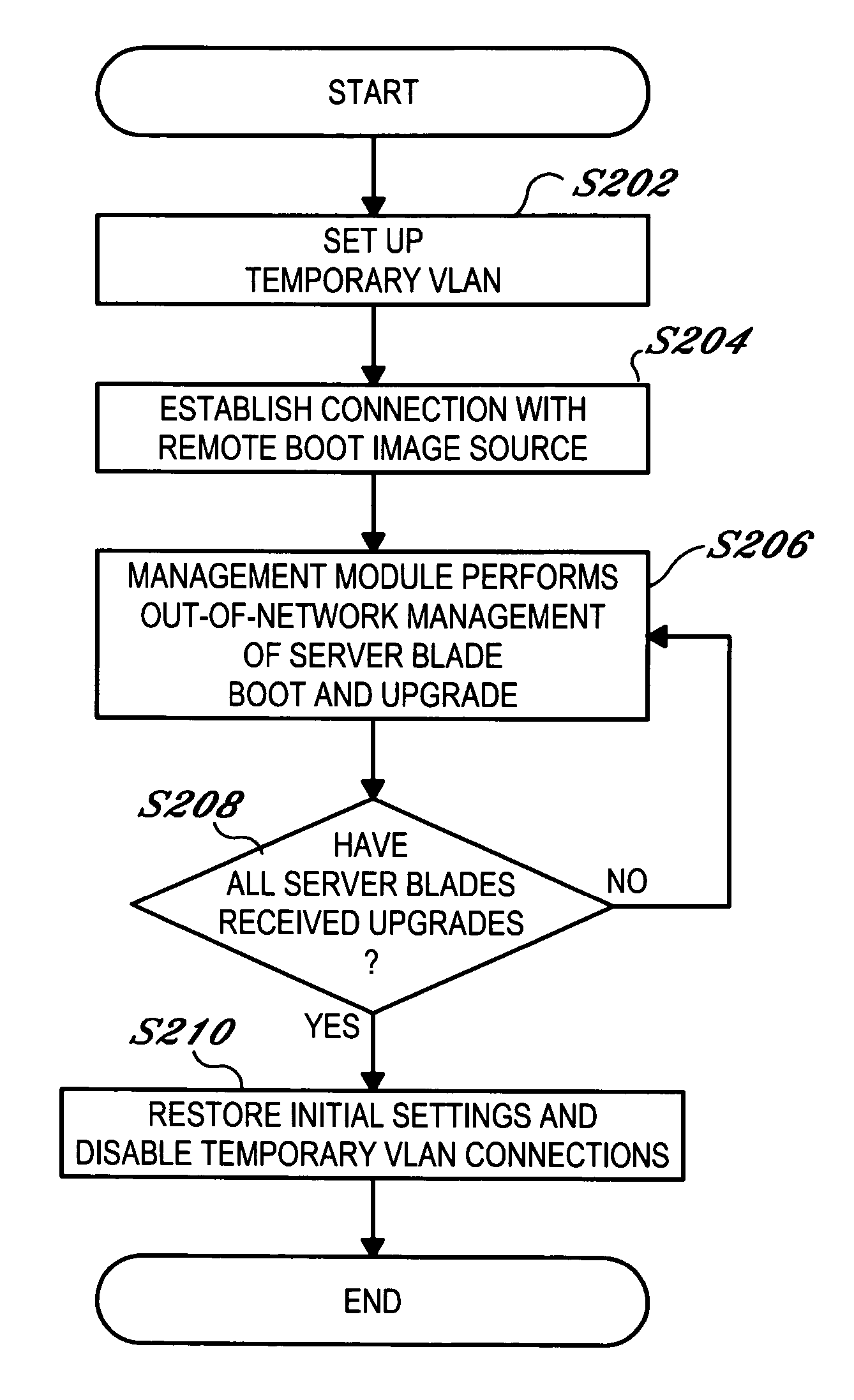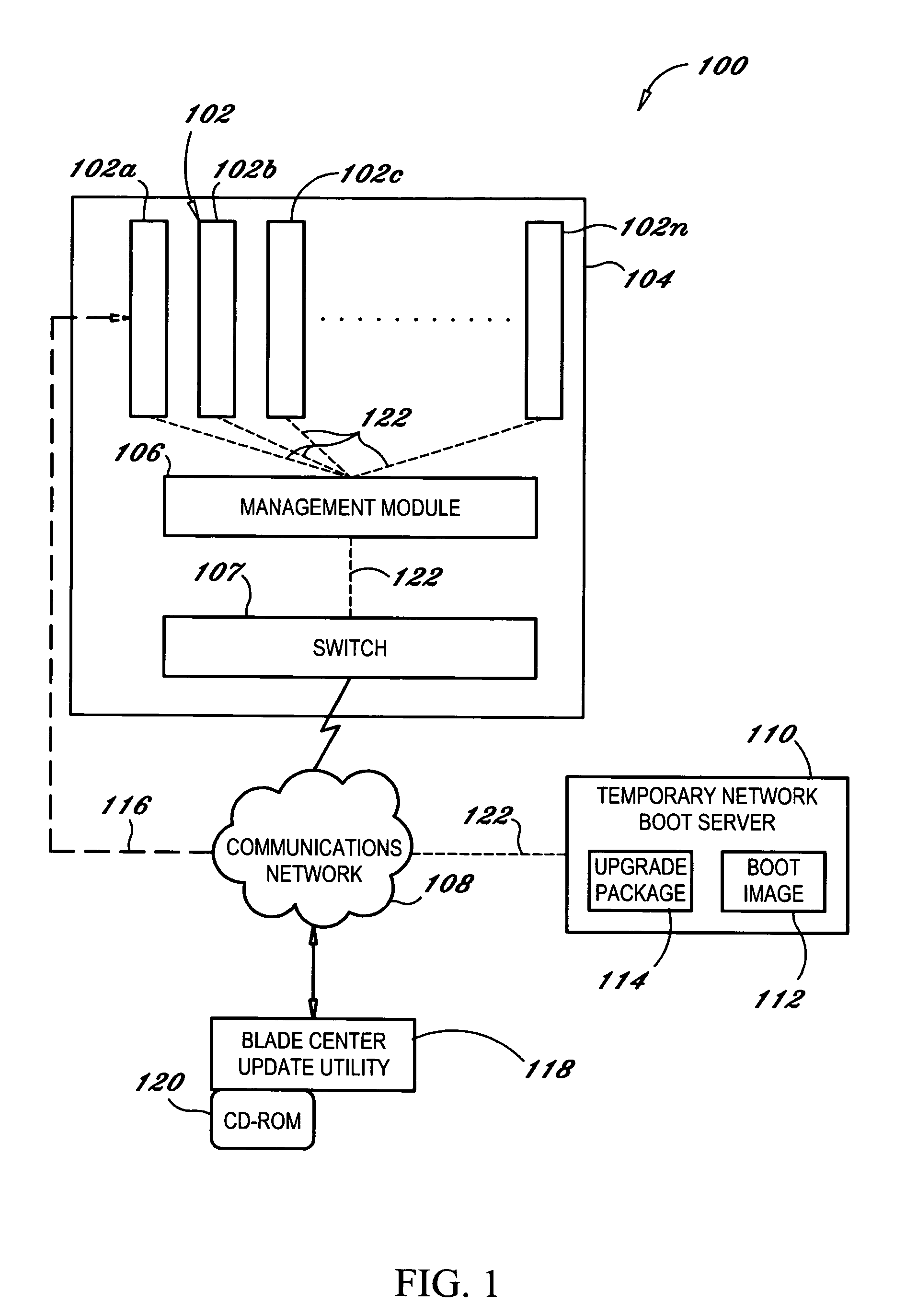Server blade network boot method that minimizes required network bandwidth
a server blade and network boot technology, applied in the field of server blade network, can solve the problems of large bandwidth use, time-consuming, costly, etc., and achieve the effect of minimizing the use of network bandwidth
- Summary
- Abstract
- Description
- Claims
- Application Information
AI Technical Summary
Benefits of technology
Problems solved by technology
Method used
Image
Examples
Embodiment Construction
[0018]The present invention advantageously provides a method and system for remotely booting each of a plurality of server blades within a BLADECENTER® and for providing update packets to each server blade via an out-of-band communication systems in order to minimize bandwidth in a communication network. The invention eliminates the need for repeated administrative intervention and allows each blade within the BLADECENTER® to access a remotely-stored boot image and upgrade package from a remote source via a management module. In this fashion, the present invention implements a separate communication path from a temporary boot server to each server blade, via the management module, allowing all updates to be performed seamlessly without tying up network bandwidth.
[0019]Referring now to the drawing figures in which like reference designators refer to like elements there is shown in FIG. 1 a system constructed in accordance with the principles of the present invention and designated ge...
PUM
 Login to View More
Login to View More Abstract
Description
Claims
Application Information
 Login to View More
Login to View More - R&D
- Intellectual Property
- Life Sciences
- Materials
- Tech Scout
- Unparalleled Data Quality
- Higher Quality Content
- 60% Fewer Hallucinations
Browse by: Latest US Patents, China's latest patents, Technical Efficacy Thesaurus, Application Domain, Technology Topic, Popular Technical Reports.
© 2025 PatSnap. All rights reserved.Legal|Privacy policy|Modern Slavery Act Transparency Statement|Sitemap|About US| Contact US: help@patsnap.com



